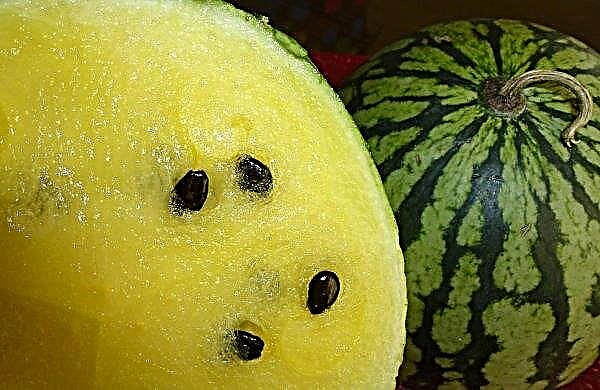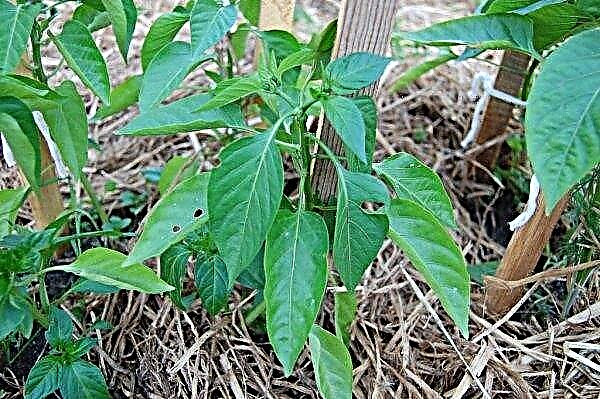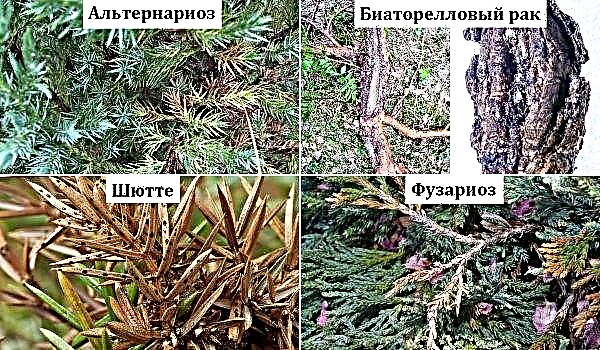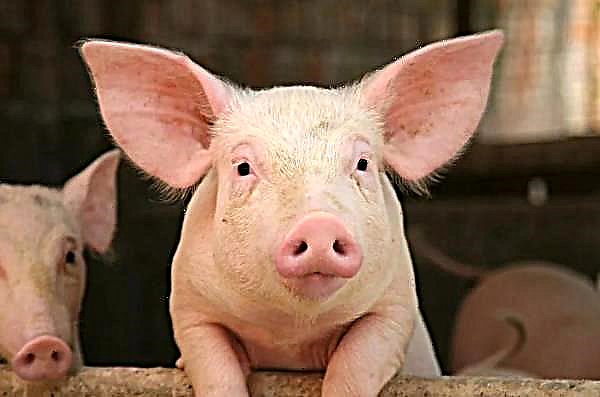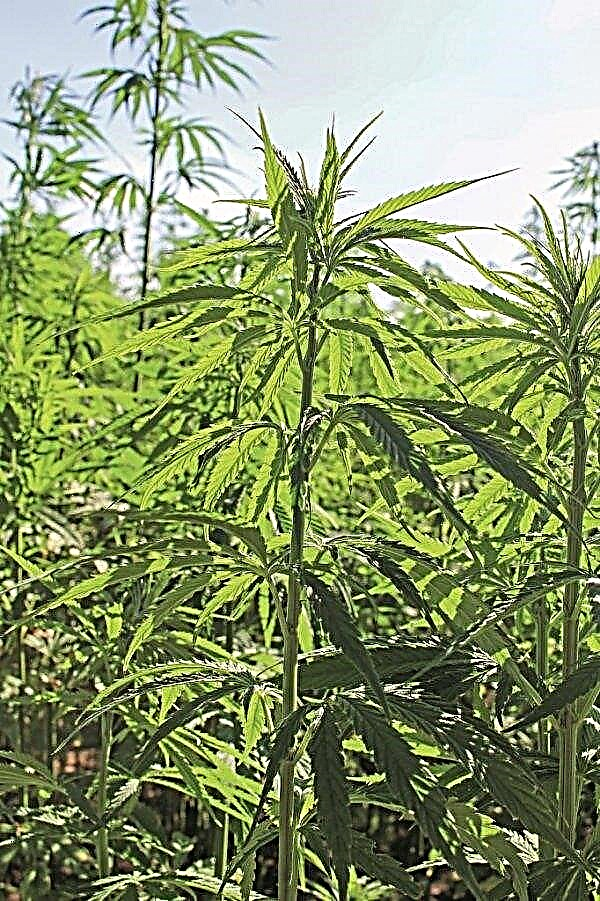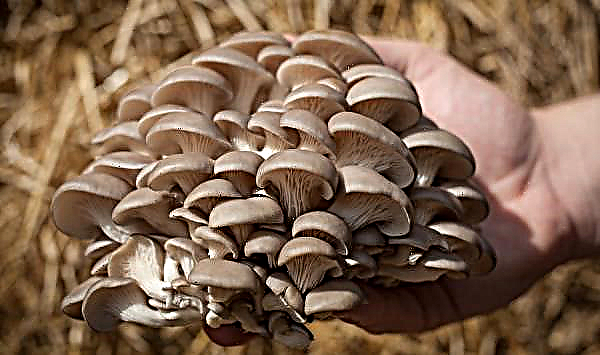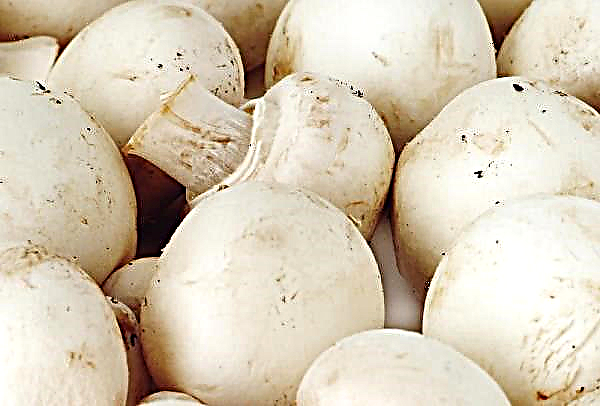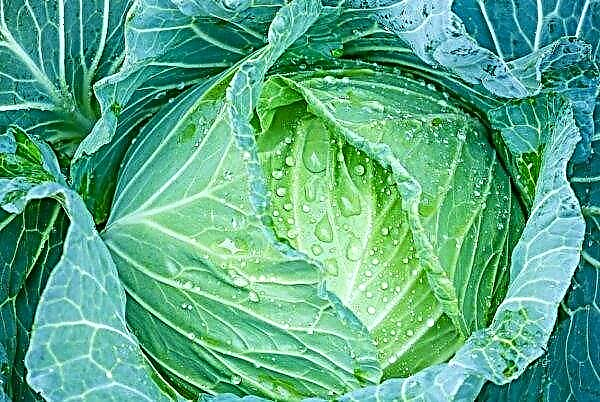Pharmaceutical preparations often become indispensable helpers in the garden and in the garden, being used as antiseptic agents for the treatment of planted crops and soil for them. A good example of such compositions is Farmayod, which far not all gardeners and gardeners know about the specifics of its beneficial effect. Why this drug is remarkable and how it is better to use it on personal territory - read on.
Composition and principle of action
The main component of Farmayoda is iodine, known for its high disinfecting ability. The mass fraction of this component can reach up to 10% of the total volume of the product, and the rest is reserved for nonionic surface-active substances (surfactants). Together, they make the drug an excellent disinfectant and antiseptic: when it penetrates into the cells of living microorganisms, iodine, as an active halogen, is included in their amino groups and releases active oxygen, causing the cells to "work apart."

As a result, this leads to the death of any pathogenic microorganisms, in particular pathogenic bacteria, fungi and viruses. In addition, the positive effect of the drug is also expressed in restraining the number of individual representatives of small insect pests: ticks, thrips, nematodes. Sometimes the high effectiveness of the drug is clearly visible in the fight against helminths and simple microorganisms, as it destroys the larvae and helps get rid of cysts.
Important! Iodine destroys all life in its path, so it should not be used after saturation of the soil with beneficial bacteria, and also immediately after planting crops. The ideal time for disinfection of soil, tools, greenhouses or greenhouses - a few weeks before planting in the spring, or immediately after harvesting in the fall.
In horticulture and gardening, Farmayod is usually used to eliminate the following problems:
- viral and bacterial ailments of fruit trees and shrubs, as well as fungal infections, lichens and algae, which harm these crops;
- viruses, necrosis, bacterial wilting of roses and bulb plants in the flower garden;
- mosaic viruses, double streak, bacterial core necrosis, late blight and bacterial cancer of tomatoes and other nightshade cultures;
- late blight, Y-virus, X-virus, potato M-virus;
- mosaic virus, bacterial wilting of cucumbers and other pumpkin plants.
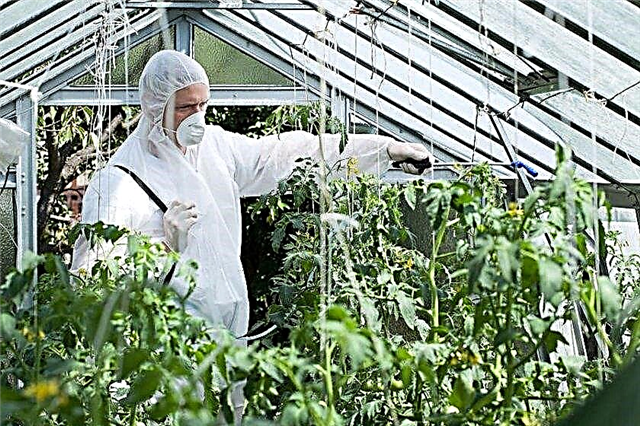
Disinfectant preparation: dosage and method of application
Whatever problem you may encounter when growing plants, the use of Farmayoda should be carried out in strict accordance with the instructions, and for different treatments it will have its own differences. For this reason, using the composition for disinfecting greenhouses, disinfecting the soil, pre-planting seed or seedlings, the following recommendations should be considered.
For greenhouses
The surface of greenhouse structures is often fraught with larvae of pests or pathogenic bacteria, so when growing the same varieties of crops in one place, you will have to responsibly approach the issue of cleaning the room. The Pharmayod drug used for these purposes should be previously diluted in water, in a ratio of 100 ml of concentrated substance to 10 liters of pure liquid.
For further application of the product to the surface, use a spray gun or simply wipe the component parts of the structure with a cloth moistened in solution. All equipment used in the process, as well as the soil itself, into which it is planned to sow seeds or plant seedlings, is subject to similar processing.
Video: Farmayod treatment of the greenhouse
For the soil
A working solution for the soil is prepared in the same proportions as in the previous case, although if last year’s treatments were ineffective and the plants were still affected by diseases, then it is worth increasing the concentration of Farmayoda in the finished mixture to 300 ml per 10 liters of water.
To perform soil disinfection, you can use the same sprayer or a watering can with small holes, and one 10-liter portion of the solution will be enough to clean up 5 m² of territory. Plants can be planted only two days after the treatment, and if you did everything right, the number of pathogens will decrease by 98%.
Important! To restore the beneficial microflora in the treated soil, one week after the disinfecting measures are completed, it is worth adding beneficial bacteria to the soil thickness by choosing one of the most popular preparations: for example, Baikal EM1 or Vostok EM1. An acceptable alternative would be the use of organic fertilizers in the form of compost infusion, although in this case you need to be sure that there are no pathogens in it.
Seed and Plant Processing
Preplant plant treatment of plant material is used to prevent viral, bacterial and fungal diseases in a wide variety of plant groups: from standard vegetable crops to seedlings of fruit or flower varieties.
Instructions for the preparation and further use of the resulting composition in each of these cases looks like this:
- To soak pumpkin or tomato seeds, it is necessary to prepare a solution of 5-10 ml of the substance and 10 liters of water, then lower the seeds into it for half an hour and rinse under running water (before planting, they must be dried to a state of flowability).
- To spray cucumbers or another garden, you can use a ready-made solution of 3 ml of the drug, dissolved in 10 l of water, though for potatoes this rate can be increased to 5-10 ml for a similar amount of liquid.
- Bulb dressing is carried out with a solution of 10 ml Farmayoda and 10 l of water, in which the planting material is soaked for at least 30 minutes.
- To treat fruit trees and shrubs in early spring (or late autumn), their crowns are sprayed with a solution of 50-100 ml of the described preparation and 10 l of water (it will be possible to use the crop of treated plants no earlier than 3 days after the procedure).

Regardless of the type of treatment, you need to use a freshly prepared solution on the first day, and in order to maintain the immunity of plants after spraying with an iodine-containing composition, several weeks later you can add immunostimulating compounds like HB-101 or Ecoberin.
Compatibility with other means
The drug "Farmayod" goes well with most other insecticidal and fungicidal formulationsTrue, only if they do not have a strong alkaline reaction. It can be insecticides, acaricides, immunomodulators, growth regulators, mineral fertilizers with micro and macro elements, but not the popular Bordeaux mixture, “Kuprosil”, copper chloride.
Did you know? Iodine is used in various fields of human activity, in particular in forensics. It is his couples who help to detect human fingerprints left on paper surfaces.
Farmayod can be added to regular paint for whitewashing trunks of garden trees and the bases of shrubs, which will enhance the antiseptic properties of the coloring matter. Also, to protect the garden, a complex mixture is prepared by dissolving a bottle of the specified preparation in 40 liters of water and adding 10 g of boric acid, a bottle of birch tar, a bubble of ammonia and a package of fir oil to them.
Each of the constituent ingredients must be added in stages, mixing the mixture well. Before use, the finished product is additionally diluted with water (1 glass per bucket), then poured into a spray bottle and thoroughly sprayed with liquid everything that grows in the garden (including flower beds and rose gardens).

Since the antiseptic and disinfecting properties of iodine are significantly enhanced in an acidic environment, it is worth mixing Farmayod with whey, sometimes replacing it with plain pure water. In addition to the main antiseptic effect, such a tool will reduce the number of empty flowers on tomatoes and cucumbers.
Chemical products based on iodine
The simplest replacement for Farmayod will be ordinary pharmacy iodine, which is also dissolved in water in the same way, slightly reducing its amount in comparison with the above standards. Other chemicals with a similar effect are Iodinol and Iodopirion, which for spraying are bred in water in a ratio of 1 tsp. substances in 2 liters of water. For preplant seed soaking, you can dissolve ½ part of any preparation in the indicated amount of liquid, and then lower the seeds into it for about half an hour.
Safety precautions
Farmayod and other similar drugs based on iodine are toxic chemical compounds, so people under the age of 18 are not allowed to work with them. However, even adult users should comply with basic safety requirements, be sure to wear protective rubber gloves and replaceable clothing when spraying plants with a ready-made solution. Prepare the working composition away from food, storing it in a tightly closed container until the very moment of processing the vegetation.

During the procedure, you should not smoke, eat or drink, and at the end of all actions, be sure to wash your hands and face well. In case of poisoning with iodine vapor (it can manifest as nausea, vomiting or dizziness), you should immediately consult a doctor: the main "antidote" in this case is sodium sulfate, which is given to the victim if fresh air and rinsing the mouth with clean water do not bring improvement.
If the prepared solution accidentally gets into the eyes or on the mucous membranes of the body, such places should be thoroughly rinsed with water, with the further use of a 30% sodium sulfacyl solution (used to instill eyes). After accidentally using the solution inside, it is advisable to immediately induce vomiting, and after cleaning the stomach, take one of the possible options for an absorbent agent.
Did you know? The discovery of iodine dates back to 1811, when the Frenchman Bernard Courtois accidentally discovered a substance new at that time in the process of obtaining saltpeter from seaweed. It was called “iodine” only two years later, and the official entry into the periodic table took place only in 1871.
Contraindications and side effects
Subject to the norms of use of the substance and the fulfillment of all requirements for the preparation of a working solution for treating plants, no adverse reactions from contact with it should occur. It also has no harmful effect on animals., especially if they will not have access to the treated area for the next few days.
Shelf life and storage conditions
The bottle with Farmayod corked by the manufacturer can be stored for a period of five years, the main thing is to maintain the temperature in the storage place at + 10 ... + 30ºС. Of course, children or animals should not have access to it, and it is better to protect the bottle from direct sunlight.

Observing all the recommendations regarding the storage and use of the Pharmayod preparation, you can significantly ease the task of caring for the plants of the garden or garden, relieving them of existing problems or preventing the emergence of new ones.

